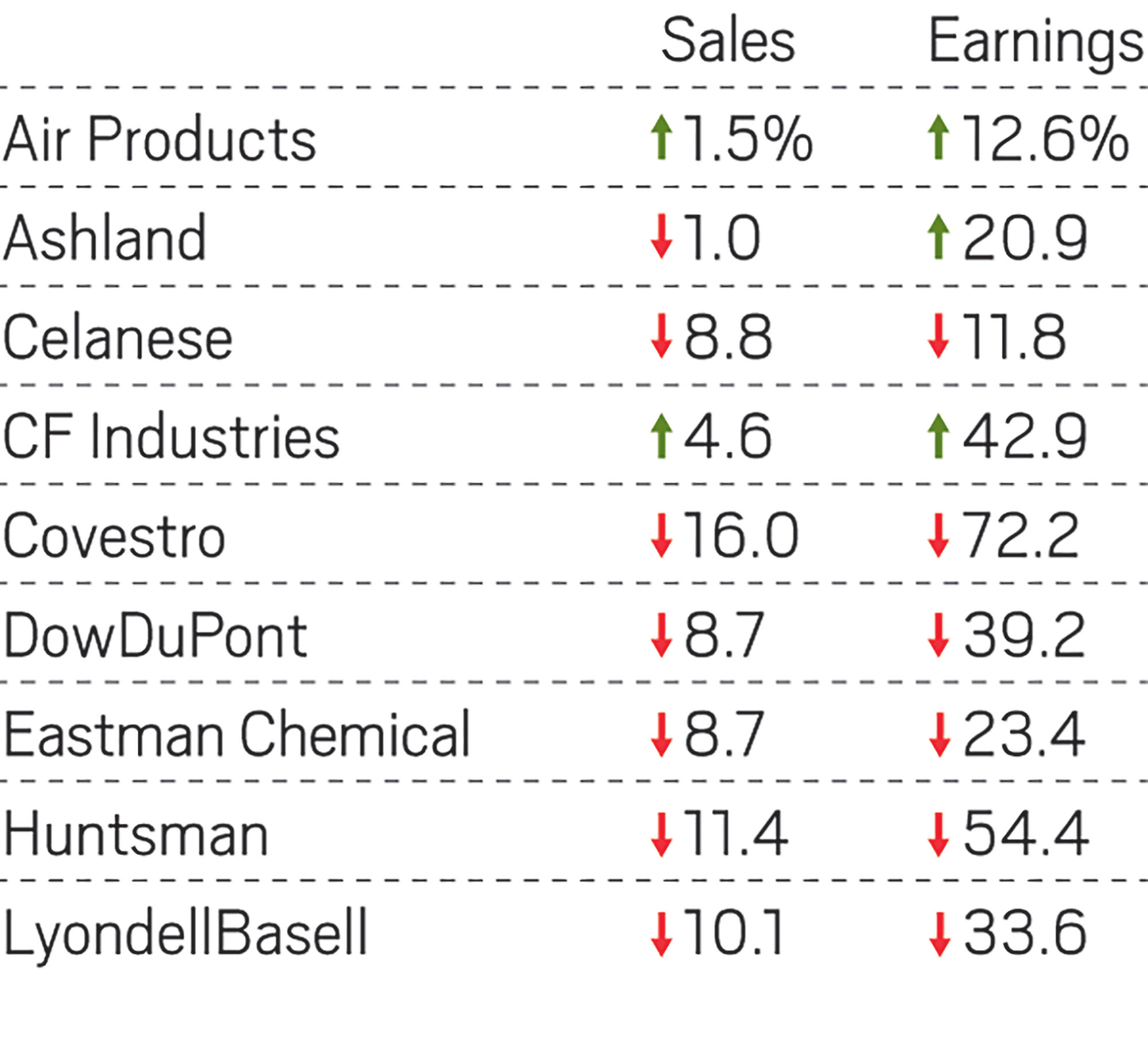Advertisement
Grab your lab coat. Let's get started
Welcome!
Welcome!
Create an account below to get 6 C&EN articles per month, receive newsletters and more - all free.
It seems this is your first time logging in online. Please enter the following information to continue.
As an ACS member you automatically get access to this site. All we need is few more details to create your reading experience.
Not you? Sign in with a different account.
Not you? Sign in with a different account.
ERROR 1
ERROR 1
ERROR 2
ERROR 2
ERROR 2
ERROR 2
ERROR 2
Password and Confirm password must match.
If you have an ACS member number, please enter it here so we can link this account to your membership. (optional)
ERROR 2
ACS values your privacy. By submitting your information, you are gaining access to C&EN and subscribing to our weekly newsletter. We use the information you provide to make your reading experience better, and we will never sell your data to third party members.
Finance
Chemical firms struggle in first quarter
Earnings take a hit as prices sink for specialty chemicals
by Melody M. Bomgardner
May 2, 2019
| A version of this story appeared in
Volume 97, Issue 18
First-quarter earnings from the chemical industry show that economists’ predictions were correct: industrial growth slowed early in the year. The resulting decline in chemical demand was stark compared to last year’s first quarter, when sales were on fire and companies raised prices.
First-quarter results

That pricing power is now gone. The change in fortunes was most notable in certain specialty chemicals and geographies. For example, Ashland, DowDuPont, and Eastman Chemical reported weaker North American sales of coatings and adhesives.
Ashland CEO William A. Wulfsohn explained steps the company is taking to be resilient while markets gyrate. “We saw lower-than-expected demand in some of our higher-margin end markets,” he told investors. “To reduce that impact, the team increased sales in the construction, energy, and nutrition markets.”
Germany’s Covestro saw no change in sales volumes for coatings and adhesives and was even able to increase prices. But weak demand from automakers for its polyurethanes took a bite out of the firm’s earnings.
The challenging environment will last throughout the year, Covestro chief financial officer Thomas Toepfer told investors. In response, the company is refurbishing plants, investing in specialty films, and planning to cut costs by nearly $400 million in the next few years.
DowDuPont and Huntsman also complained of sluggish auto market conditions. At DowDuPont, sales were down across most of its business segments, with the exceptions of nutrition and health and safety and construction. Safety and construction did well thanks to demand for water treatment products and Tyvek and Kevlar protective materials.
This will be the last time DowDuPont releases earnings as a combined company. The materials science–focused Dow split off on April 1. On June 1, Corteva Agriscience and the new DuPont, with its specialties businesses, will also spin off into separate companies.
Celanese also saw weaker demand. Its engineered materials sales sank in the first quarter compared with the year-ago period. But Celanese and other chemical firms pointed out that performance was strong on a sequential basis—that is, compared with the fourth quarter of 2018. That comparison pleased stock analysts, who had expected worse first-quarter results at several major companies.
And there are signs that industrial activity is already picking up. LyondellBasell Industries reported that April has brought volume improvement and strong seasonal demand for olefins and polyolefins. Air Products, which saw a modest increase in demand for industrial gases, has upped its earnings expectations for 2019.
Celanese and Covestro are maintaining their earnings growth expectations for the year. But Ashland, Eastman, and Huntsman told investors they expect a few more difficult quarters. “Given the continued strengthening of the US dollar and lack of visibility as to the timing of market recovery, we have revised downward our full-year outlook,” Ashland’s Wulfsohn said.


Join the conversation
Contact the reporter
Submit a Letter to the Editor for publication
Engage with us on Twitter